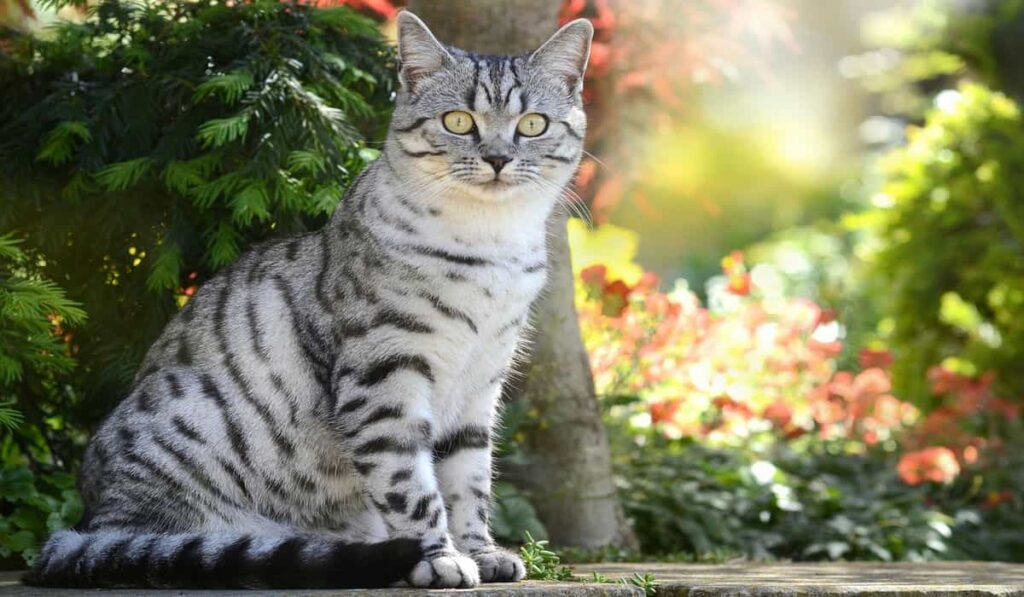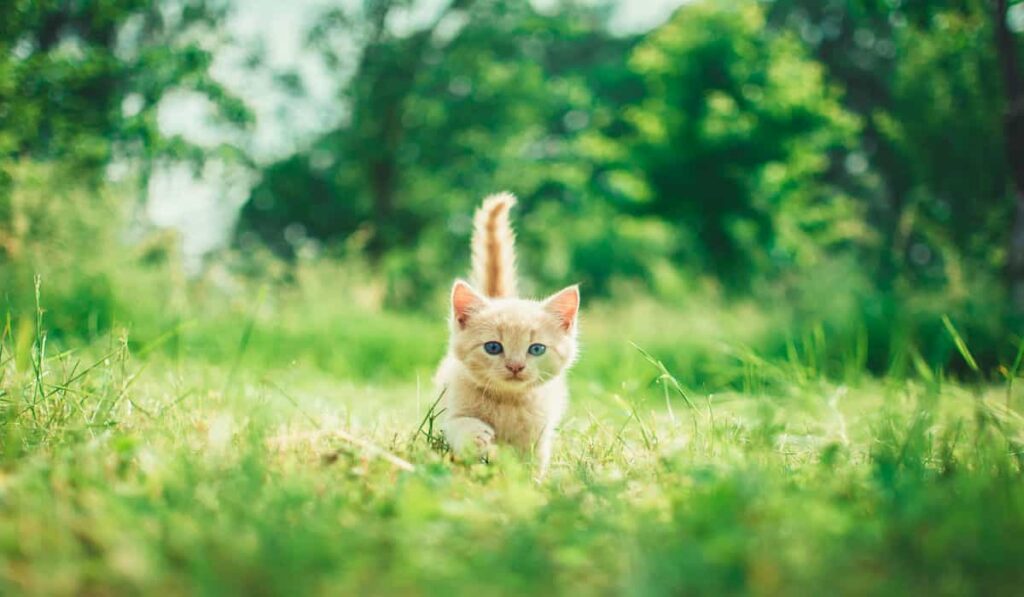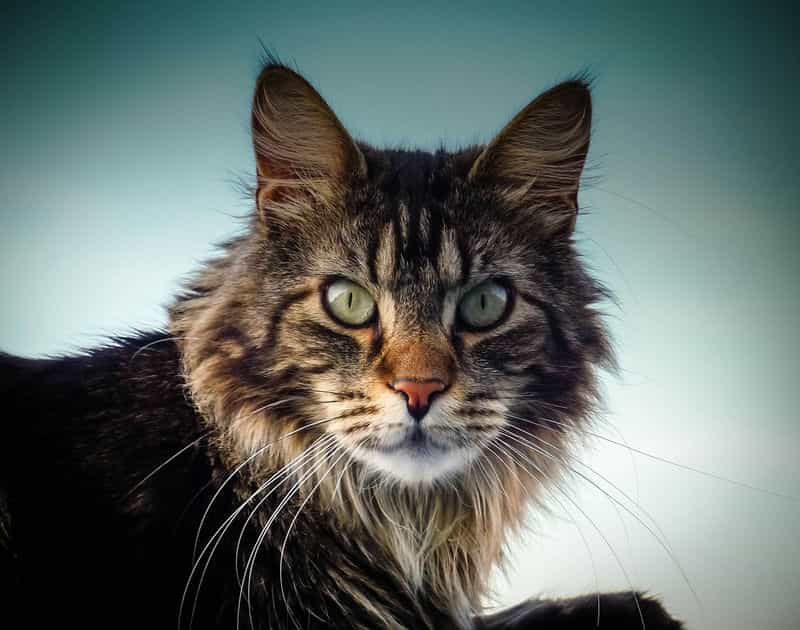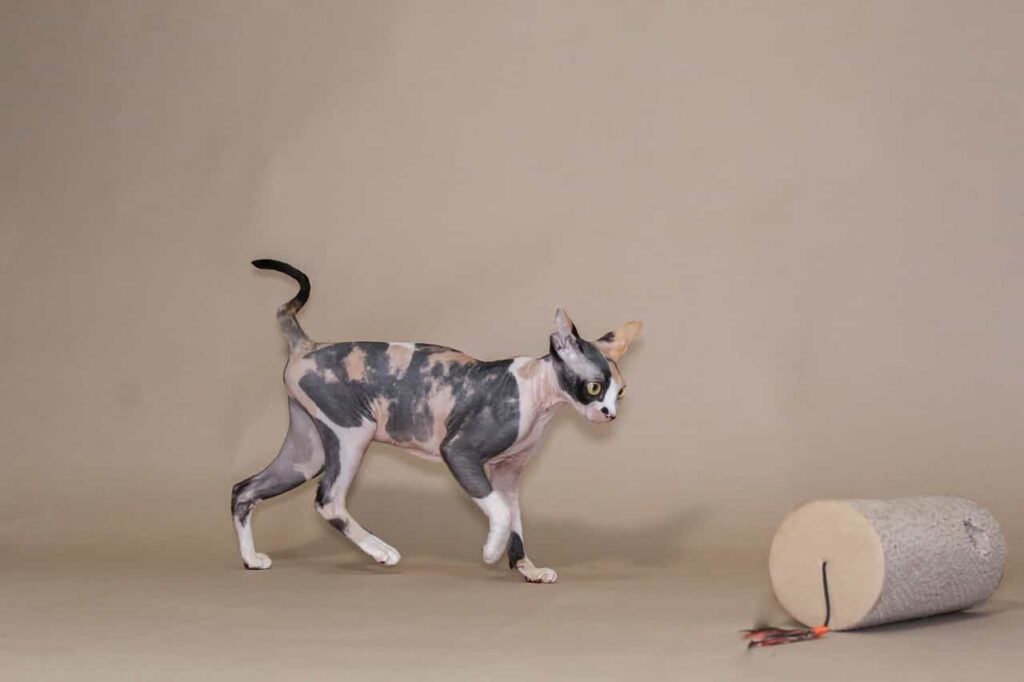Welcome to the captivating world of Tabby Cats, a breed that combines the allure of wild feline beauty with the warmth of domestic companionship. Known for their distinctive coat patterns and endearing personalities, Tabby Cats are not just a pet choice; they are a foray into a life filled with charm and intrigue. In this comprehensive guide, you will uncover the secrets to maintaining a healthy and happy Tabby Cat, from understanding their unique care requirements to mastering the art of grooming and socialization.
Discover the diverse world of Tabby Cat coat patterns, delve into their behavior traits, and learn how to provide the best nutrition and exercise for your feline friend. Whether you’re considering adopting a Tabby Cat or already share your home with one, this guide will equip you with the knowledge and insights needed to foster a nurturing and fulfilling relationship with these magnificent cats.


Table of contents
Tabby Cat breed personality
The most important thing is- Tabby is not a breed. It’s a coat type that is common in all cat breeds. The coat type came either from the ancestors or the relative breeds. The status is regardless of the Tabby cat.
Tabbies have a sign on their forehead that looks like the English letter `M.` There are some cat breeds that have Tabby pattern coats. Those are- American Bobtail, Toyger, Pixie-Bob, European, Manx, Ocicat, Sokoke, Bengal, American Shorthair, Egyptian Mau, Turkish Angora, Turkish Van, Somali, Singapura, Sieberrian, Scottish Fold, Persian, Rex, Ragdoll, and so on.
Well, you already know that Tabby isn’t any breed; it’s a coat pattern only. So, there are so many cat breeds included in Tabby cats. So, it is very natural that a Tabby cat’s personality depends on its breed. Many breeds, many personalities.
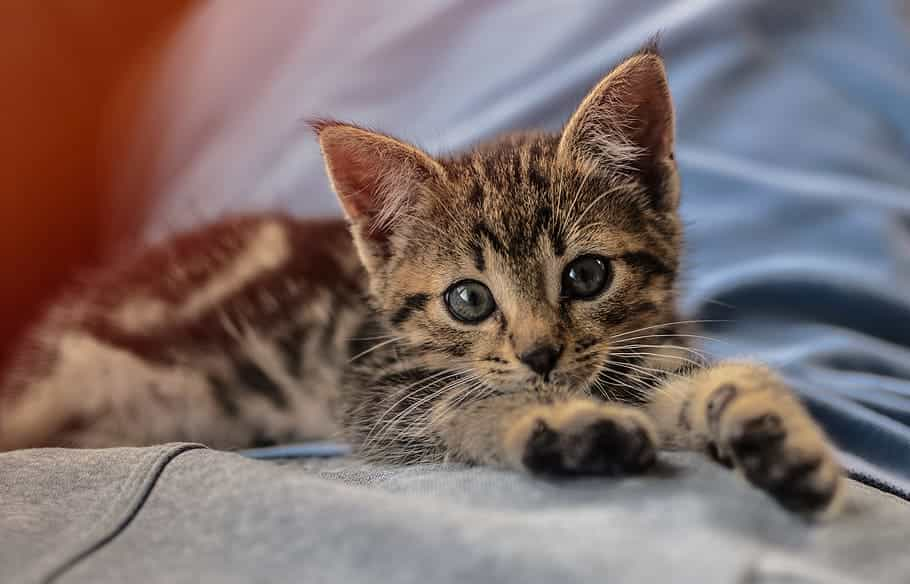

Here are some examples of some breeds’ personalities:
- British Shorthair Tabby cat: mellow, easy-going, but not a lap cat.
- American Shorthair: adaptive, sociable, and moderately active.
- Abyssinian Tabby: energetic, loyal, affectionate, not a lap cat.
- Bengal Tabby: highly active, intelligent, talkative, and friendly.
- Scottish fold Tabby: Sweet, smart, cuddly, moderately active.
- Maine Coon Tabby: friendly, well-behaved, and adaptable, but not a lap cat.
- Savannah Tabby: active, clever, friendly, and confident.
- Devon Rex Tabby: attention-seeker, smart, mischievous, and moderately active.
Scientists reveal how Tabby cats get their distinctive stripes
Researchers reveal the way that gene makes striping strip pattern in Tabby cat’s fur. Alabama’s Hudson Alpha Institute for Biotechnology and The Sanford School of Medicine conducted a new study and said how Molecules are involved in pattern development.
The study found that differences in the expression of the embryo’s genes determined the colors of hair. Similarly, cat fur patterns can be different from their signature patterns later. It is equally true in the case of large wild cats, such as Leopards and Tigers.
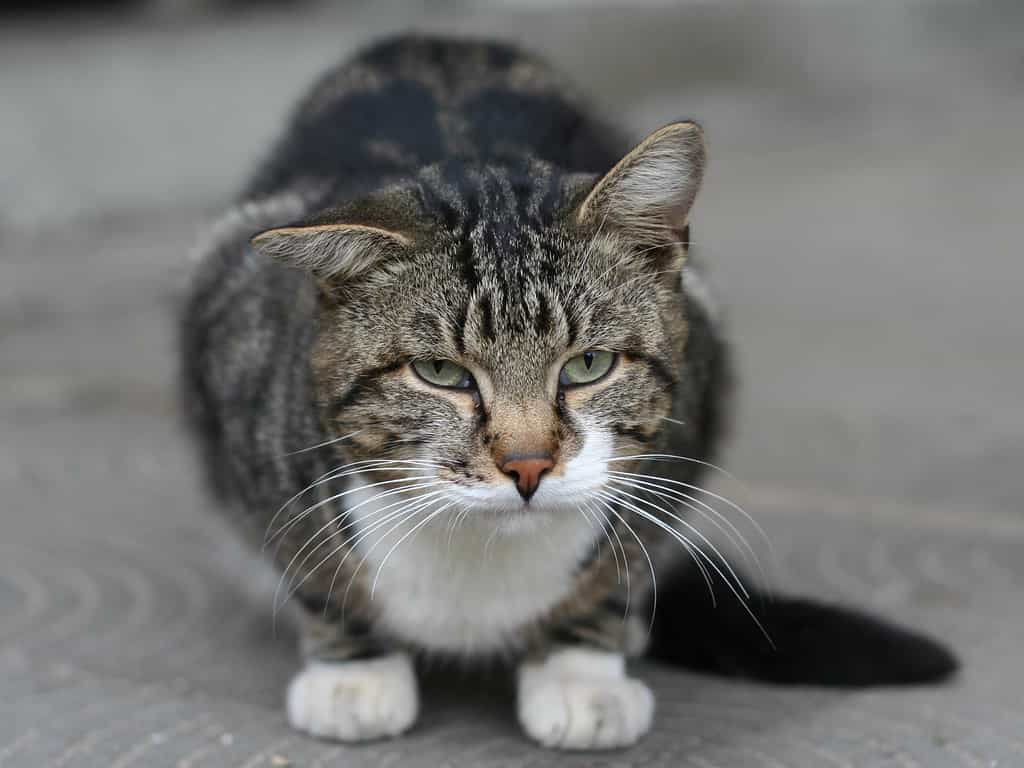

A gene known as Dickkopf 4 (Dkk4) is vital to the Gene process. But, it can be muted in some areas. As an example, Abyssinian cats hold a ticked pattern, but they can come in Tabby or Fleck-like markings in some areas. So, it is evidence that Dkk4 Gene is mutated for this cat in those particular areas.
What exactly are Tabby cats?
Tabby cats can’t be crammed into definitions because it’s not a breed at all. Many cat breeds have the Tabby coat pattern. Tabby cats are available in different sizes, breeds, coat patterns, and obviously in different natures. So, how can you tell that it’s a particular breed? The cat breeds have Tabby coat patterns- all are Tabby cats.
Some fascinating facts about Tabby cats
- The name `Tabby` came from one kind of Silk `Atabi`- from Baghdad, Iraq. Eventually, it was changed to Atabis- a French term, then `Tabis,` and finally, The English term `Tabby.`
- All Tabby cats have the trademark of the letter `M` on their forehead.
- Tabby cats have 6 unique patterns.
- Tabbies are actually wild and wait for hunting in a bush or long grasses in the jungle.
- They have big personalities- intelligent, social, affectionate, and great hunting skills.
- Tabby cats are the most original cats in the world because the cats were born naturally, not the offspring of any crossbreeding.
- The cats are related to Prophet Muhammad (S) and Jesus Crist. A cat sleeping on Muhammad’s sleeve- was a Tabby cat. Prophet Muhammad blessed the cat, and since then, Cats have been respected as Holy creatures in Islam and also allowed into the Mosque. When Jesus Crist was a kid, A Tabby cat gave him warmth and comfort from the extreme cold of Bethlehem, Jerusalem, Palestine.
- Many Orange Tabby cats have little Black freckles on their nose and mouth area.
- All Orange cats are Tabby cats, but all Tabby cats don’t come only in Orange color.
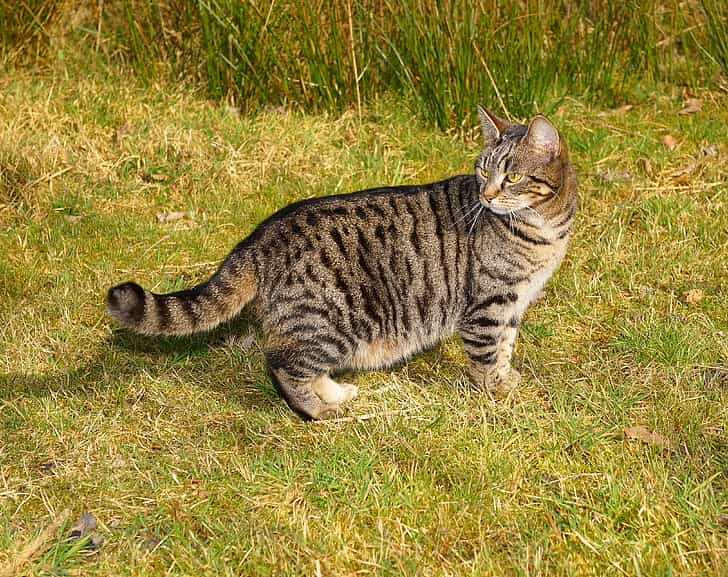

Some Tabby cat patterns
First of all, you need to know the common traits of Tabby cats. All Tabbies have markings on their face and around their eyes. Pencil markings on the face and expressive markings around their eyes. Another common trait is- an `M` sign on all Tabby cat’s foreheads. Seems that someone wrote it on their forehead.
Some popular Tabby cat
- Patched Tabby cat:
They’re also called Tortoiseshell or Tortie Tabby. Their Coats look like Tortoiseshells. In Brown and Red Tabby, the patches are different. All Patched Tabbies are not the same.
- Ticked Tabby cats:
They’re also known as Abyssinian or agouti Tabbies. They don’t have traditional stripes or Spots on their body. In fact, they don’t seem to be Tabby cats at first glance. Their coats are Tabby-marked, and there are Agouti hairs on the body.
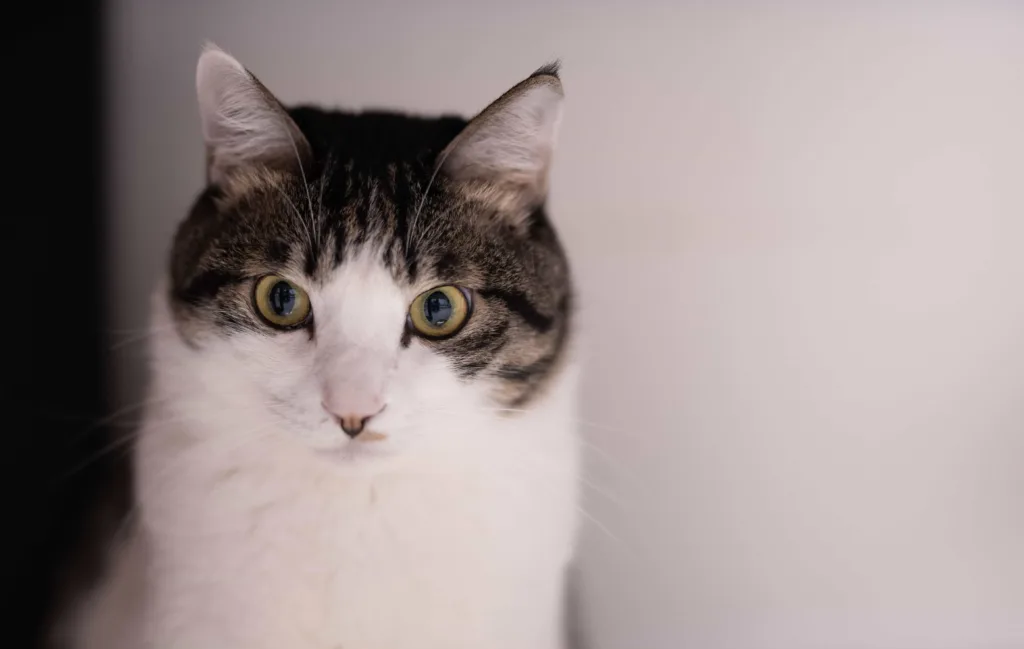

- Classic Tabby cats:
Another name is Blotched Tabby. They look like just a Marble cake. The bold and swirling patterns, along with circular Smudges on the body. If you see them closely, the coats will look like Bullseye.
- Mackerel Tabby cats:
They are also known as `Tiger cats because of the narrow stripes that run parallel downward their both sides. The stripes are long, and non-brokenly reach the spinal cord just like the fish skeleton. That’s why the word Mackerel used to.
- Spotted Tabby cats:
Spots all over the backsides of the body are called Spotted Tabbies. The stripes can be just like broken Mackerel and small or big. The difference between Mackerel and Spotted Tabby cats is- the broken and non-broken Mackerel Stripes.
- Orange Tabby:
They are also called Ginger or Orange Tabby cats. It is the color variant of all kinds of Tabby cats. Orange Tabby cats are 80% male and have recessive genes.
What’s the mystery of the `M` marking on Tabby cat forehead?
Well, there is no scientific explanation behind the `M` marking. Only some beliefs behind the scene.
- One belief is the `M’has come from Egyptian Mau- which also has a Tabby coat pattern. So, the `M` came from the word `Mau.`
- A Tabby cat slept on Prophet Muhammad (S) ‘s sleeve. When Muhammad woke up and saw a Tabby, he didn’t wake up the cat. He cut the cloth from his sleeve instead. Later, the Tabby cat alerted Muhammad of the upcoming danger towards him, and Muhammad blessed the cat. Since then, Cats have been considered holy animals in Islam, and the `M` came from Muhammad.
- Another explanation is- the ‘M’ for Mother Marry. When Jesus Crist was a baby, one day, there was extreme cold in Bethlehem, Jerusalem, and Palestine. So, Jesus was crying because of the cold. Then a Tabby cat came and purred to produce heat to give comfort to Jesus Christ. Then Mother Mary blessed the Tabby cat.
If you believe in Science, then it is only a genetic reason behind the `M.`
Some name suggestions for Tabby cats
Former US President Abraham Lincoln (1861-1865) had a Tabby cat named Tabitha. You also can keep these names: Stripes, Tiger, Spot, Swirl, Marble, Sand, or Mac. You may choose a name from pop culture.
Some Tabby cats from pop culture
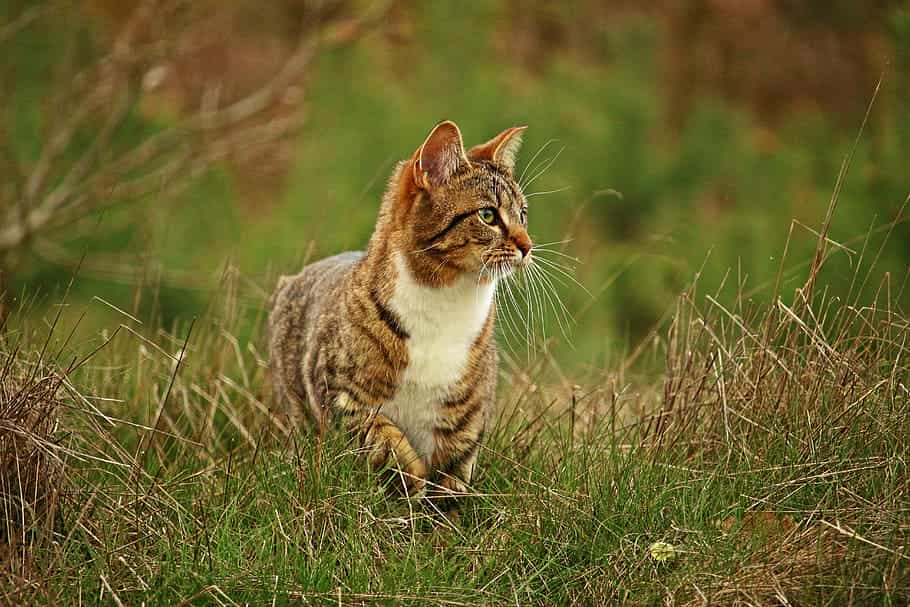

Tabby cats from comic books:
Garfield (Garfield), Chewie (Captain Marvel), and Hobbes (Calvin and Hobbes).
Tabby cats on TV Series:
Phobes Mom( Friends), Spot (Star Trek), Bast (American God), and Orange Tabby from the Sopranos Finale.
Movie star Tabbies:
Captain Marvel (2019), Poos in boots (2011), The Godfather (1962), Men in Black (1997), and so on.
Cons of Tabby cats
You should know that-
- Some breeds may be high-maintenance.
- Some breeds are prone to health issues.
- Their personalities depend on their breeds.
Tabby cat overview
Tabby isn’t a breed, a coat pattern. More or less, all Tabbies are very beautiful and suitable for families, including toddlers, children, and seniors. So, not only for their fame, know about the specific breed which you want to adopt.
Essential Care Tips for Maintaining a Healthy Tabby Cat
Providing the best care for your Tabby Cat is key to ensuring their long-term health and happiness. Tabby Cats, known for their striking coat patterns and engaging personalities, require specific attention to thrive. First and foremost, understanding the dietary needs of your Tabby Cat is crucial. Feeding them a balanced diet that aligns with feeding guidelines for Tabby Cats, rich in essential nutrients, supports their overall well-being. It’s important to choose high-quality food that caters to their age, weight, and activity level.
In addition to health care, providing a stimulating and safe indoor environment is vital. Tabby Cats, with their curious and playful nature, benefit from having access to toys, scratching posts, and climbing structures. This not only keeps them physically active but also mentally stimulated. Given their Tabby Cat behavior traits, they appreciate interactive play sessions with their owners, which also strengthens the bond between cat and human.
Finally, it’s important to maintain a consistent grooming routine. While Tabby Cats are generally low-maintenance in terms of grooming, regular brushing helps to keep their coat healthy and reduce shedding. It also provides an opportunity to check for any skin issues or abnormalities. By following these essential care tips, you can ensure your Tabby Cat leads a healthy, active, and joyful life.
Effective Grooming Routine for Tabby Cats
An effective grooming routine is integral to the well-being of Tabby Cats, known for their distinctive coat patterns and textures. Regular grooming not only keeps their coat in pristine condition but also serves as a bonding activity between the cat and its owner. The grooming needs of Tabby Cats vary depending on their coat type, which can range from short to medium length. Regardless of the coat length, brushing your Tabby Cat a few times a week is recommended to remove loose hair and prevent matting, especially for those with denser fur.
When grooming a Tabby Cat, use a brush suited to their coat type. A fine-toothed comb works well for short-haired Tabbies, while a wider-toothed comb or a slicker brush may be better for longer-haired varieties. Regular brushing helps distribute natural oils throughout their coat, maintaining its shine and health. It also provides an opportunity to check for any skin issues or parasites.
Bathing a Tabby Cat is generally not required frequently, as they are quite adept at grooming themselves. However, occasional baths might be necessary, particularly if they get into something messy. Use a mild, cat-specific shampoo, and ensure that the water temperature is comfortable. Additionally, routine care such as trimming their nails, cleaning their ears, and dental hygiene are also part of an effective grooming routine. Establishing a regular grooming schedule not only keeps your Tabby Cat looking their best but also allows you to monitor any changes in their skin or coat health, ensuring any concerns are addressed promptly.
Tips for Socializing Tabby Cats
Socializing Tabby Cats is an important aspect of their overall care, contributing significantly to their behavioral development and emotional well-being. Tabby Cats, known for their diverse personality types and behavior traits, benefit greatly from early and consistent socialization. Introducing them to various people, environments, and other pets in a controlled and positive manner helps in developing their confidence and adaptability.
- Start Early: For kittens, begin socialization as early as possible. Expose them gently to different sights, sounds, and experiences. This early exposure helps them grow into well-adjusted adults.
- Positive Reinforcement: Use treats and praises as rewards during social interactions. This encourages positive associations with new experiences and people.
- Gradual Exposure: Introduce new situations gradually to avoid overwhelming your Tabby Cat. Allow them to explore at their own pace and retreat if they feel scared.
- Interactive Play: Engage in playful activities that stimulate their natural instincts. Toys that mimic prey, like feather wands or laser pointers, can be particularly effective in engaging them in a fun and interactive way.
- Handling and Touch: Regularly handle your Tabby Cat, including petting, picking up, and grooming. This familiarizes them with human touch and helps in building trust.
- Socialization with Other Pets: If you have other pets, introduce them slowly and under supervision. Monitor their interactions to ensure they are positive and safe.
- Environmental Enrichment: Provide a stimulating environment with access to windows, safe outdoor enclosures, or cat trees. This enriches their environment and offers them a variety of experiences.
Guidelines for Adopting a Tabby Cat
Adopting a Tabby Cat is a rewarding experience that brings joy and companionship to your life. However, it’s important to approach the adoption process with care and consideration. When adopting a Tabby Cat, whether from a shelter, rescue, or breeder, understanding their specific needs is crucial for a successful integration into your home.
- Research the Breed: Familiarize yourself with the Tabby Cat’s behavior traits, grooming needs, and health concerns. Understanding the breed’s characteristics ensures that you are well-prepared for their arrival.
- Choose a Reputable Source: Whether adopting from a shelter, rescue organization, or breeder, ensure they are reputable and provide health clearances for their cats. This is crucial for ensuring the long-term health and well-being of your Tabby Cat.
- Prepare Your Home: Before bringing your Tabby Cat home, prepare your space. This includes setting up a feeding area, litter box, and a comfortable resting place. Ensure your home is safe and cat-proofed to prevent any accidents or escapes.
- Health Check and Vaccinations: Once adopted, take your Tabby Cat for a thorough health check. Ensure they are up-to-date on vaccinations and discuss any dietary needs or health concerns with the vet.
- Slow Introduction: Introduce your Tabby Cat to their new home gradually. Allow them to explore at their own pace and get accustomed to the sights, sounds, and smells.
- Building a Bond: Spend quality time with your new Tabby Cat to build trust and companionship. Engage in gentle play and provide them with love and attention.
- Ongoing Care: Commit to providing ongoing care, including regular grooming, health check-ups, and maintaining an enriching environment.
Tabby Cat Training and Exercise
Training and exercise play a vital role in the life of a Tabby Cat, contributing to their physical health and mental well-being. Tabby Cats, with their diverse behavior traits and personality types, benefit from regular mental stimulation and physical activity. Implementing a routine that includes both training and exercise can significantly enhance their quality of life.
- Training Techniques: Tabby Cats are intelligent and can be trained using positive reinforcement techniques. Training them to respond to basic commands, use a scratching post, and even perform tricks can be achieved with patience and consistency. Use treats and praises as rewards to encourage learning.
- Interactive Play: Engaging your Tabby Cat in interactive play sessions is crucial. Toys that mimic prey, such as feather wands or laser pointers, can stimulate their natural hunting instincts and provide a good source of exercise.
- Environmental Enrichment: Create a stimulating environment with climbing trees, perches, and hiding spots. This not only encourages physical activity but also keeps them mentally engaged.
- Regular Exercise Routine: Incorporate a regular exercise routine to keep your Tabby Cat active. This can include play sessions, exploring safe outdoor spaces, or using cat exercise wheels.
- Socializing Activities: Tabby Cats often enjoy social interaction. Playing with other pets or participating in family activities can also be a form of exercise and socialization for them.
- Monitoring Health and Activity Levels: Adjust the type and intensity of exercise according to your Tabby Cat’s age, health status, and individual preferences. Regular veterinary check-ups can help in tailoring the exercise routine to suit their specific needs.
Conclusion
In conclusion, the Tabby Cat, with its distinctive coat patterns and charming demeanor, is more than just a breed; it’s a delightful companion that enriches our lives. Understanding and catering to their needs, from providing a nutritious diet and an effective grooming routine to ensuring regular exercise and proper socialization, is key to nurturing a healthy and happy Tabby Cat. Each aspect of their care, whether it’s recognizing the importance of their unique behavior traits, adopting them with awareness, or engaging them in stimulating activities, contributes to their overall well-being.
Tabby Cats, with their diverse personalities and adaptable nature, make wonderful pets for a variety of households. The journey of caring for a Tabby Cat is filled with rewards and joys that go beyond the ordinary pet-owner relationship. It’s about building a bond that’s based on mutual trust, affection, and understanding.
By embracing the responsibilities and joys of owning a Tabby Cat, you not only provide a loving home for these magnificent creatures but also gain an affectionate and loyal companion. Whether you’re a seasoned Tabby Cat owner or considering bringing one into your life, the journey with a Tabby Cat promises to be a fulfilling and enriching experience, filled with love, play, and purrs.

